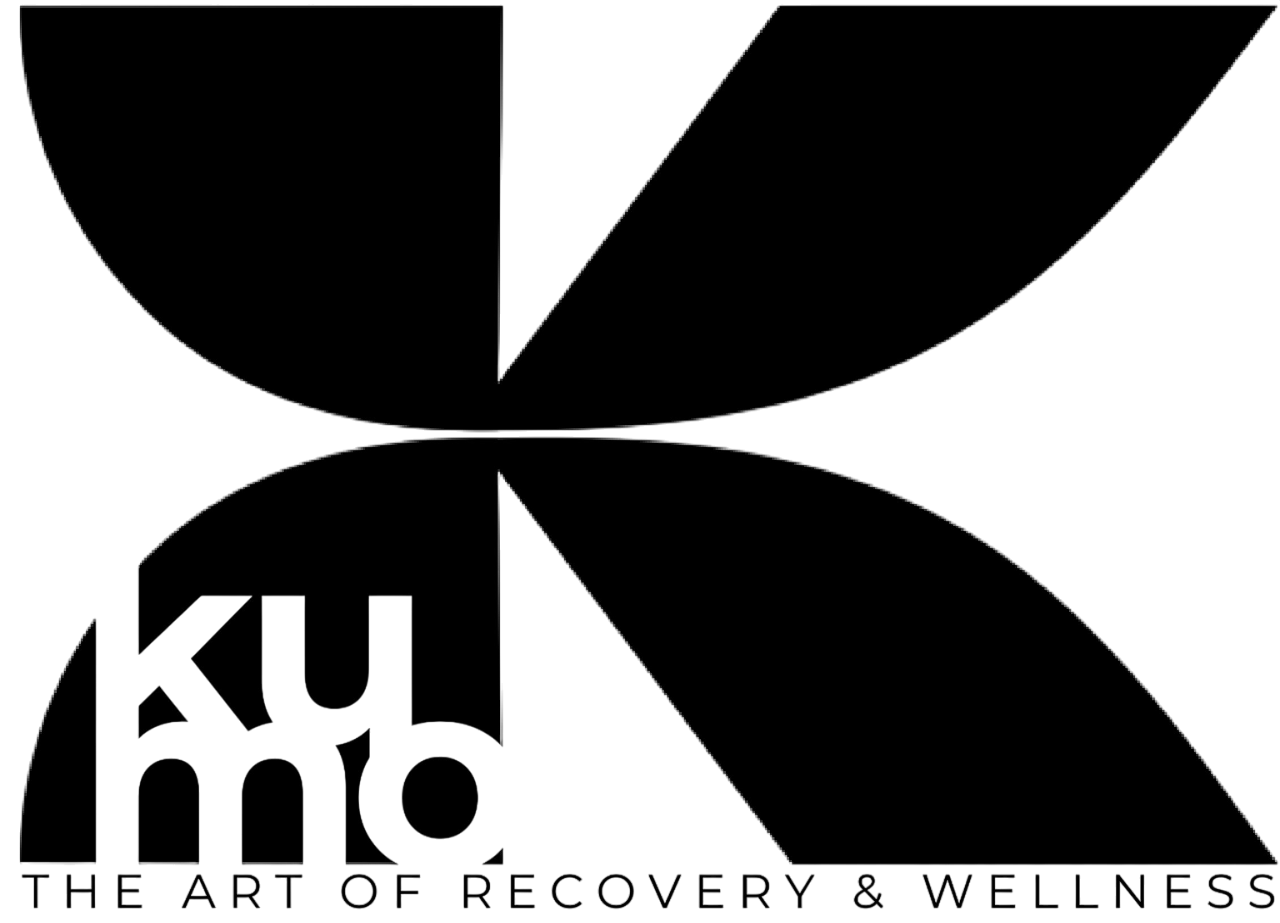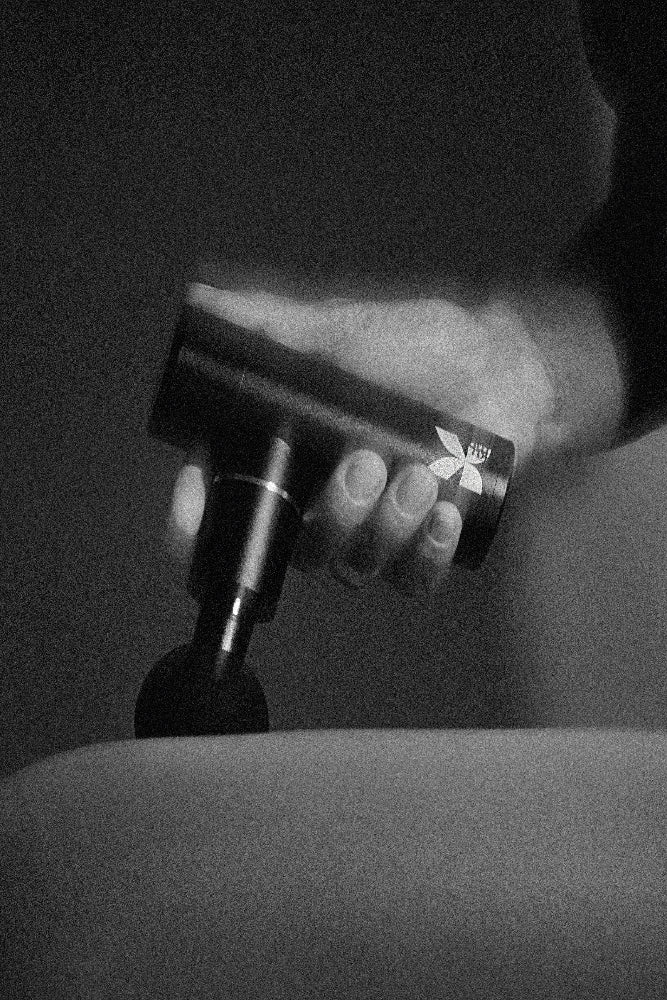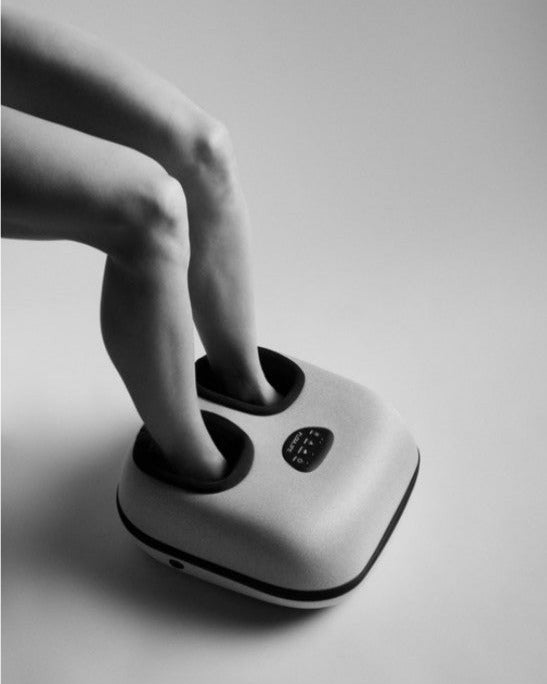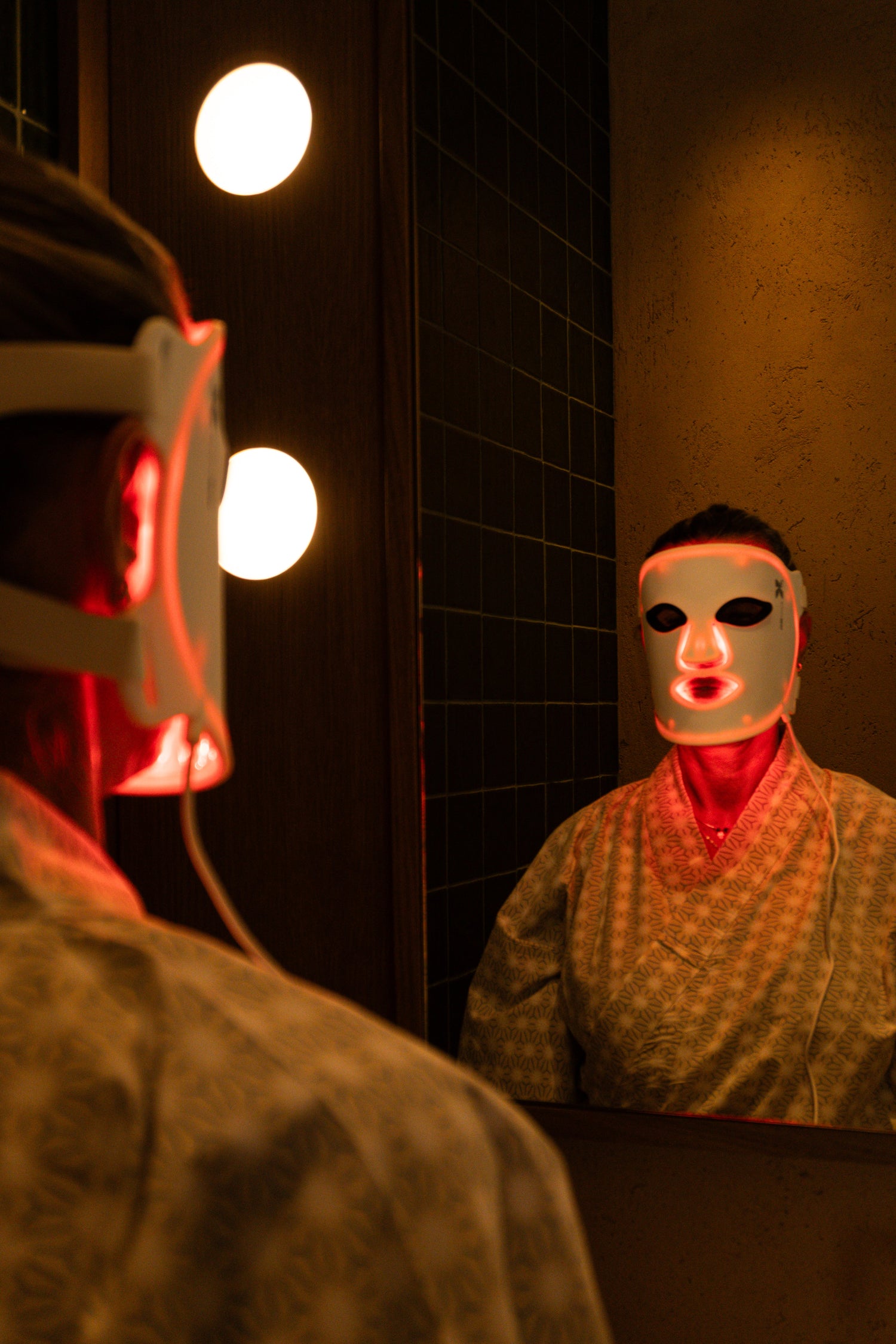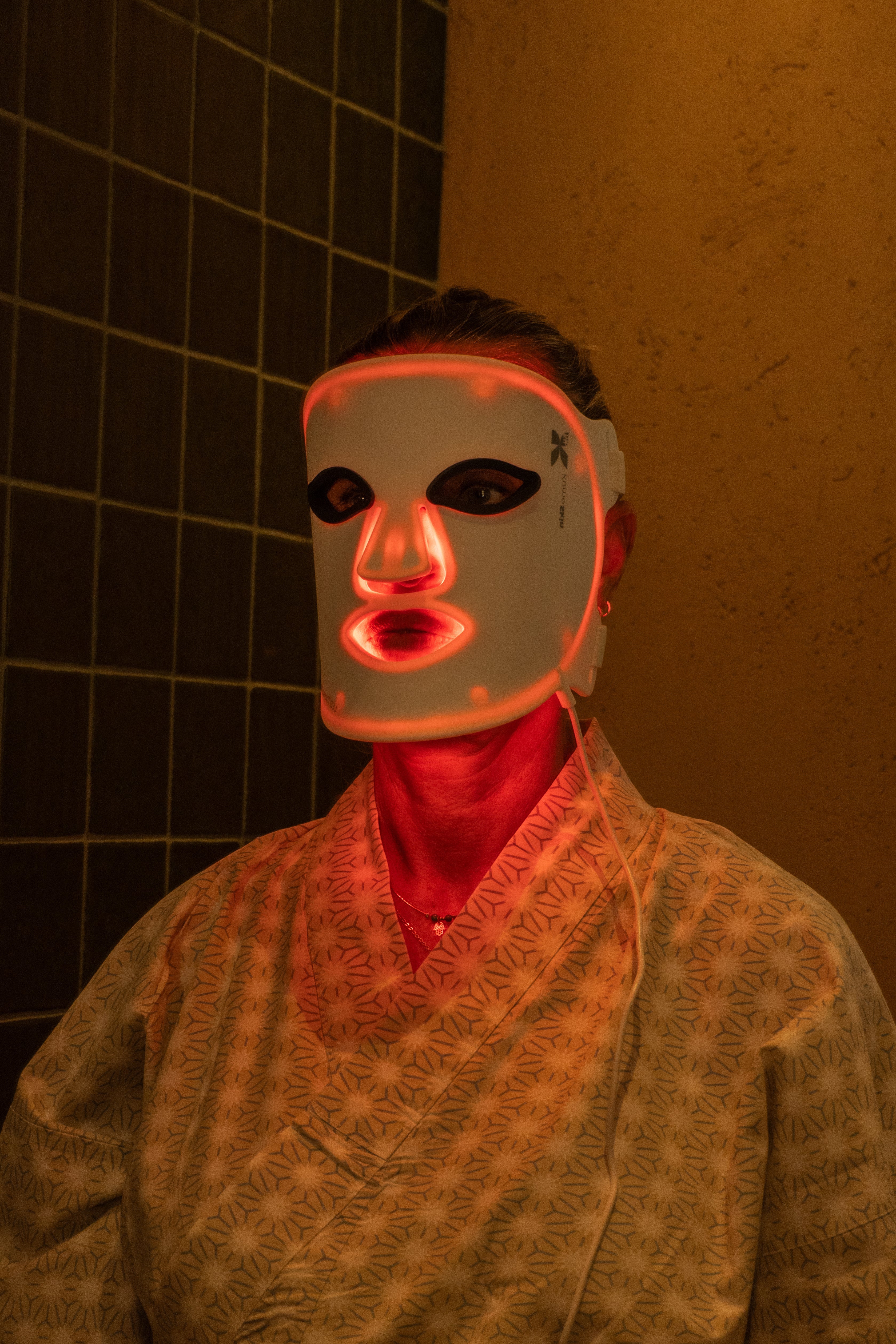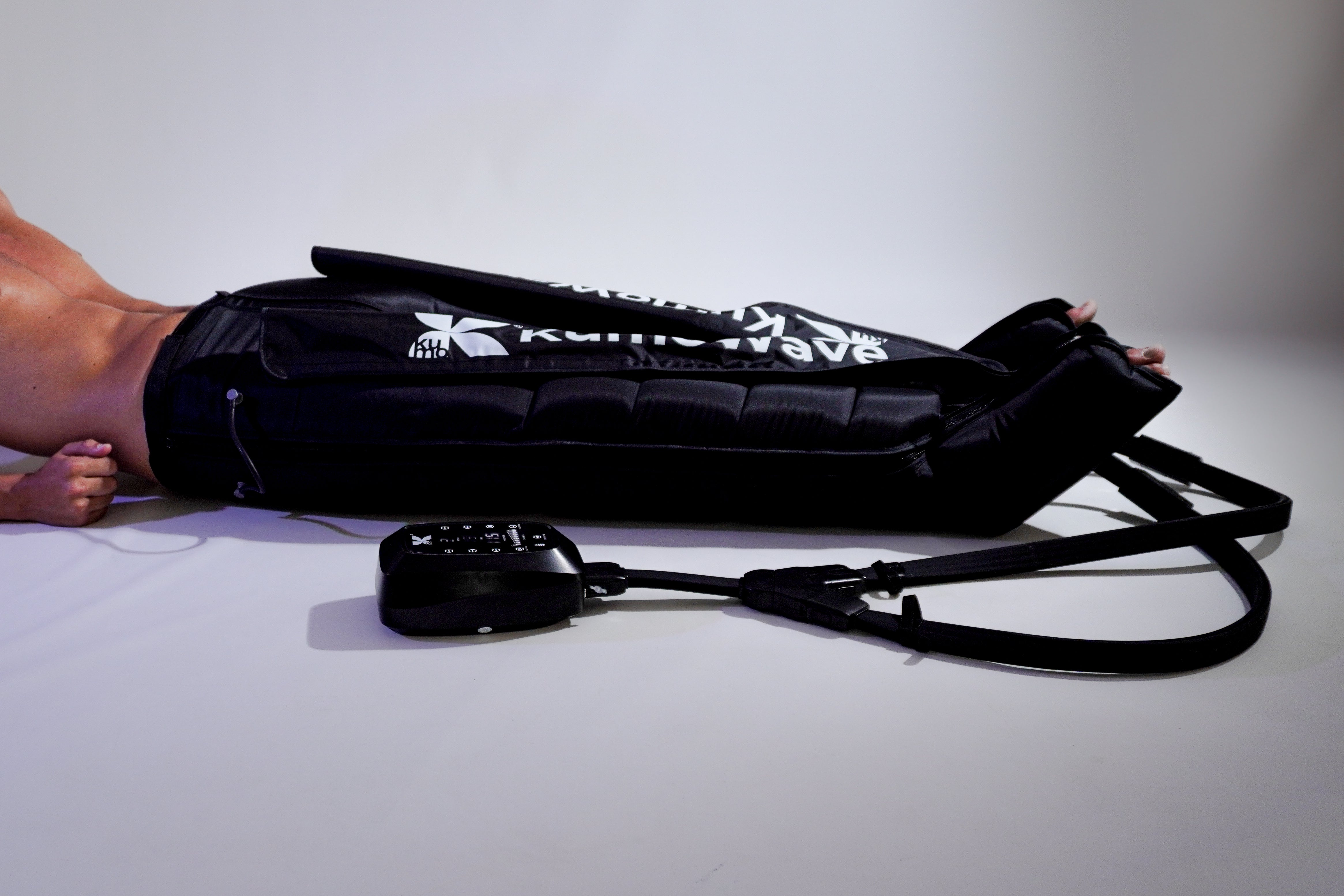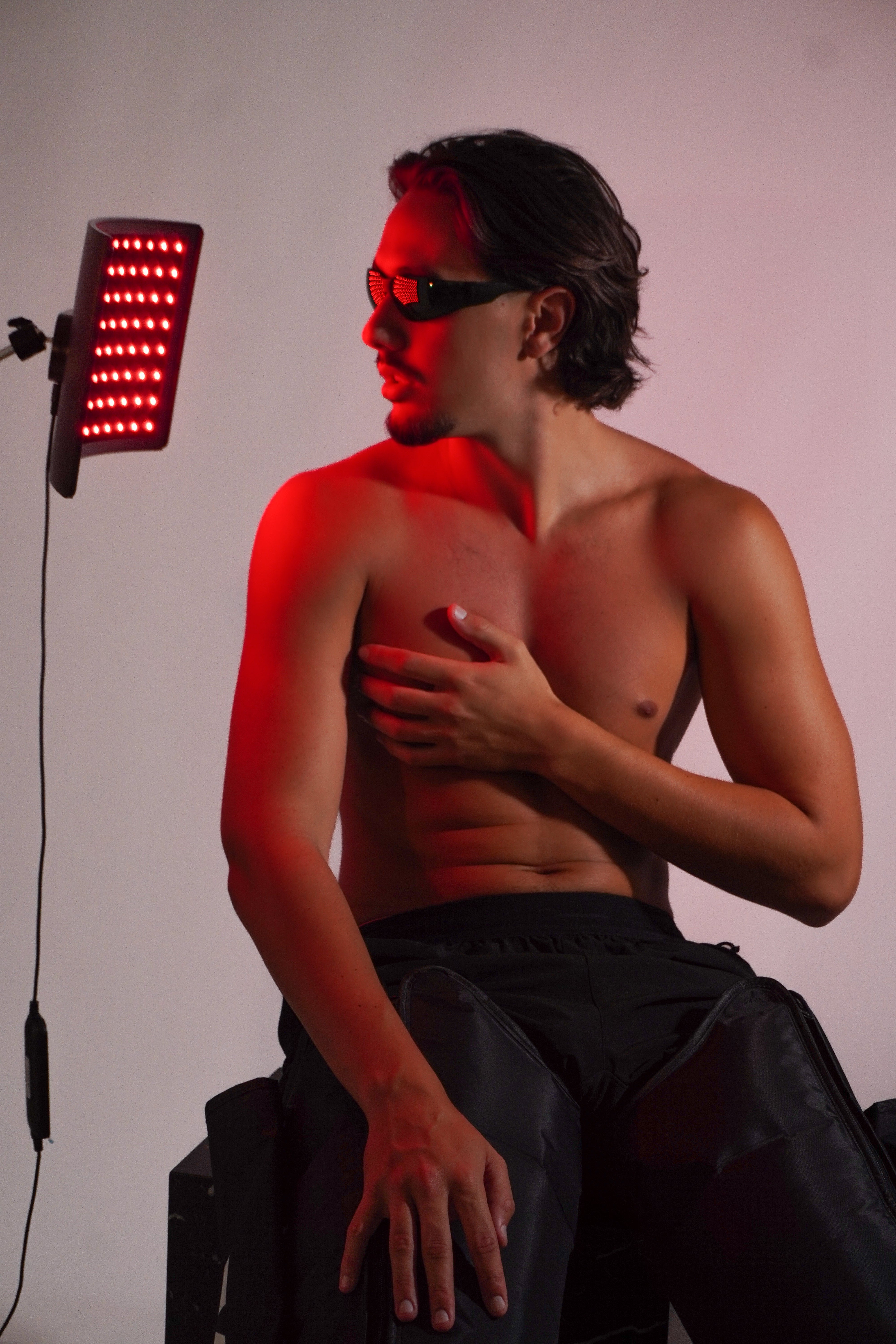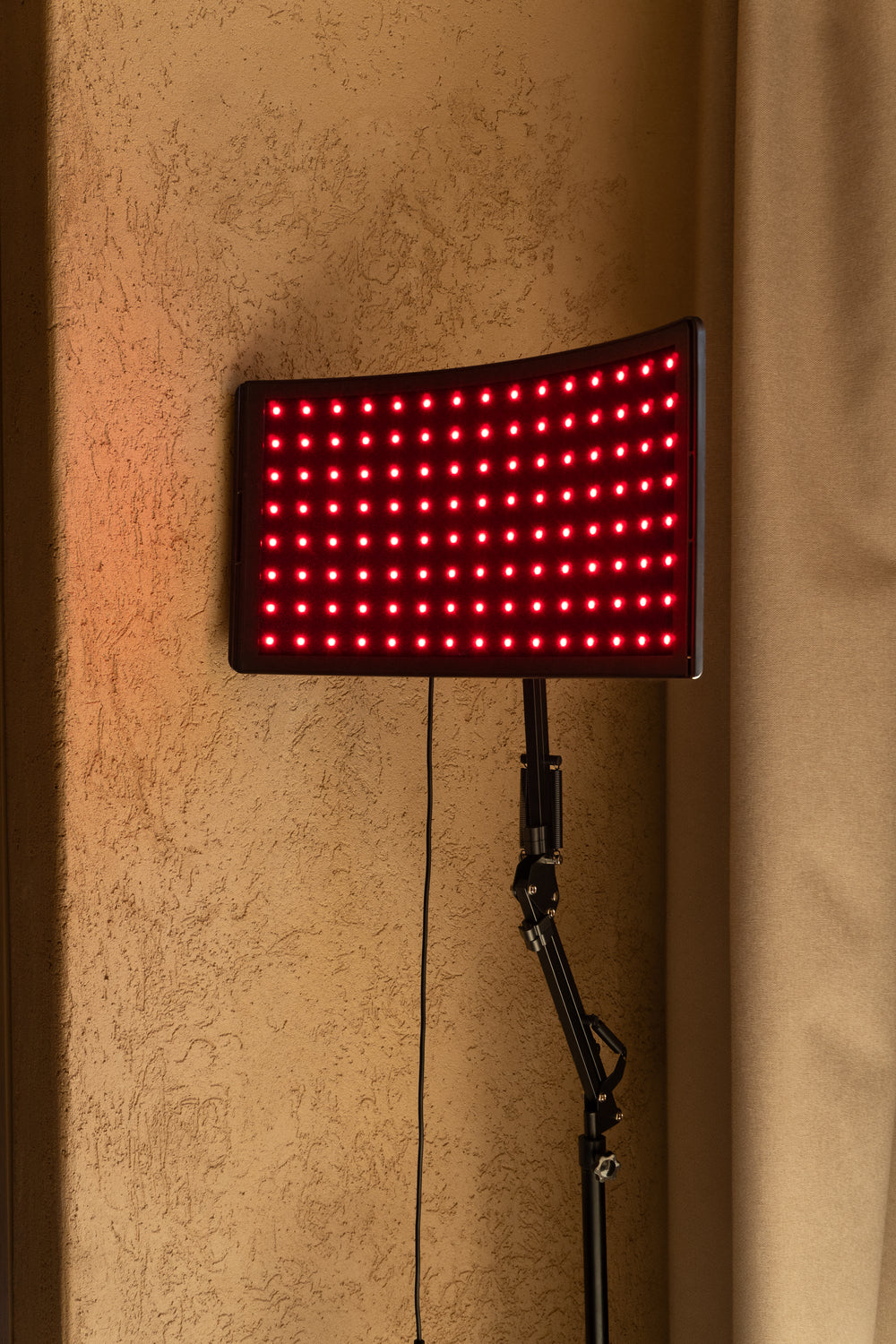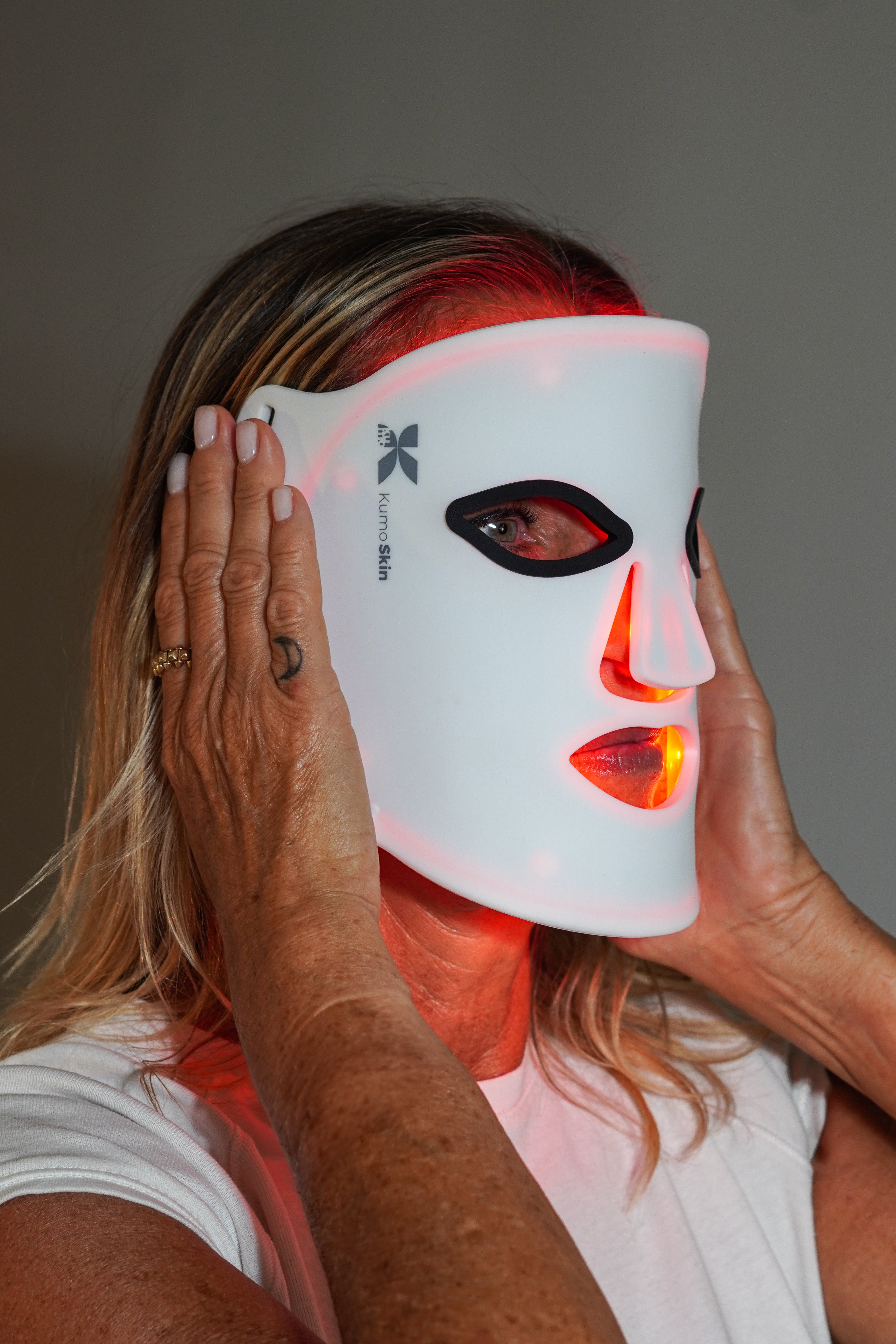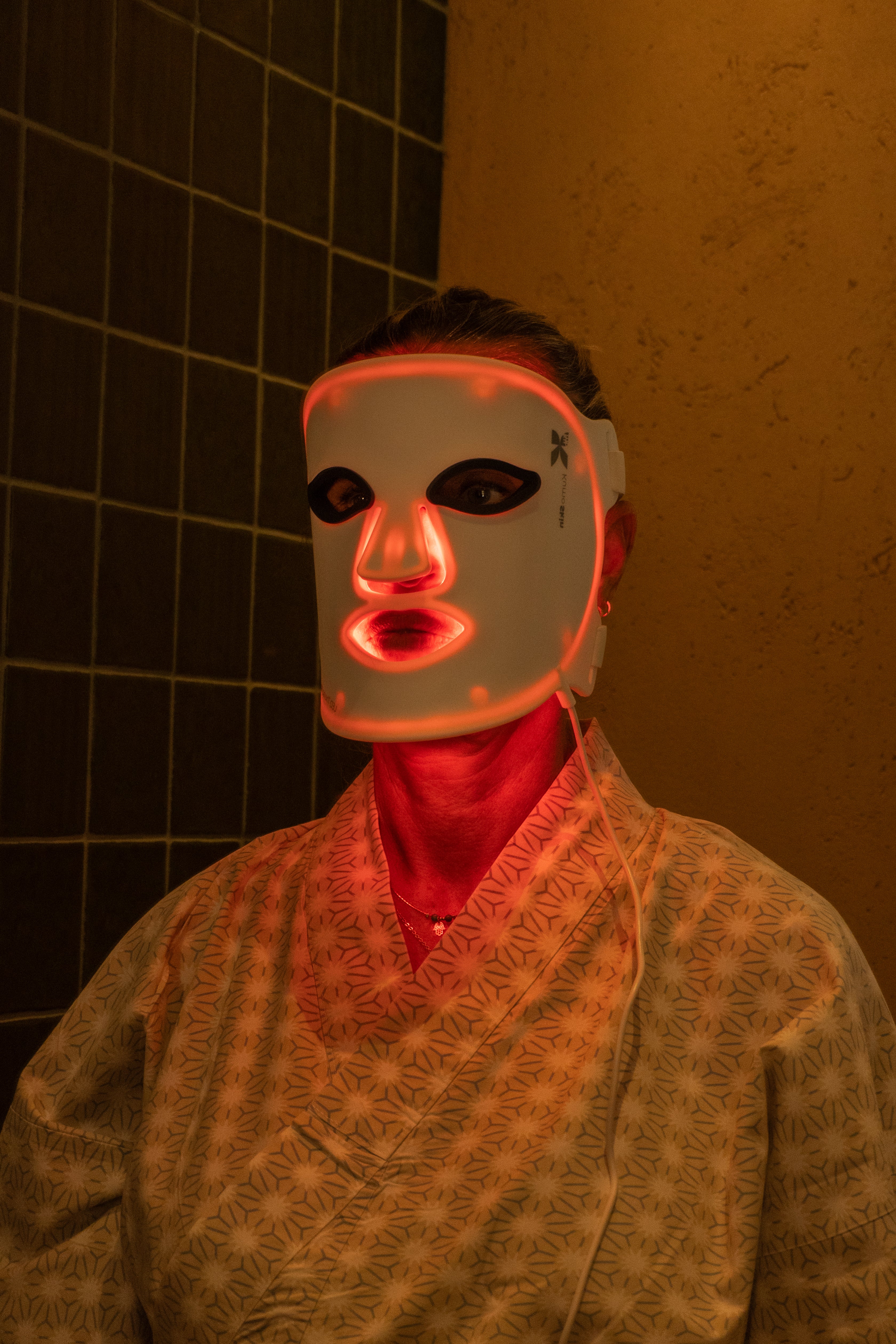LED facial mask: a clear guide to contraindications and safe use. If you're considering a light mask for home use, here's what people should avoid, when to consult a dermatologist, and how to apply it responsibly to protect your skin and eyes without sacrificing its benefits.
Coming soon
- The LED mask is safe for most people, but there are clear contraindications: photosensitivity, photosensitive epilepsy, and certain medications.
- Avoid blue light if you have melasma or a tendency toward hyperpigmentation; prioritize red/infrared light, short sessions, and sunscreen.
- Always wear eye protection and start with low intensity and 10 minutes, 3 times/week, assessing tolerance.
- Discontinue if pain, dizziness, blurred vision, hives, or worsening of the skin condition occurs.
- If you have any questions or medical conditions, consult with a certified professional and quality equipment first.
Quick summary table
| Condition or factor | Potential risk | Recommendation |
|---|---|---|
| Photosensitivity (lupus, porphyrias, photoinduced dermatoses) | Skin rash, burning | Avoid or use only after dermatological approval |
| Photosensitizing medication (tetracyclines, isotretinoin, amiodarone, thiazides) | Photoinduced reactions | Do not use; consult a doctor |
| Photosensitive epilepsy | Light-induced seizures | Contraindicated unless authorized by neurology |
| Pregnancy | Limited data | Caution: Prioritize medical advice |
| Melasma/PIH, high phototypes | Hyperpigmentation with blue light/heat | Avoid blue; short sessions, high SPF |
| Recent eye surgeries/retinopathies | Eye discomfort | Strict eye protection or avoid |
How an LED mask works and why it matters for safety
LED masks emit specific wavelengths that interact with skin cells (photobiomodulation). Red light (~630–660 nm) and near-infrared light (~830–850 nm) are associated with regeneration and calming; blue light (~415 nm) targets acne bacteria. Understanding the spectrum helps you choose the safest mode for your skin and treatment goals. Always check the quality of the device, its irradiance, and whether it has eye protection and valid certifications.
For a clinical background on phototherapy, see this independent dermatology resource: DermNet — Phototherapy . And if you'd like to explore high-end light therapy solutions, check out our selection at LED therapy .
Absolute contraindications: when not to use an LED mask
- Diagnosed photosensitivity disorders: cutaneous lupus erythematosus, porphyrias, photoinduced dermatoses. Light exposure may trigger flares. Photosensitivity review: NHS — Sunlight sensitivity.
- Photosensitive epilepsy: Light stimuli can trigger seizures. It is estimated that approximately 3% of people with epilepsy have photosensitivity; consult sources and your neurologist: Epilepsy Foundation—Photosensitivity .
- Current or recent use of photosensitizing drugs: tetracyclines (e.g., doxycycline), oral isotretinoin, amiodarone, hydrochlorothiazides, psoralens, or others prescribed by your doctor. If you are taking any new medications, confirm their profile first.
- Recent eye surgery, retinopathies, macular degeneration, or marked visual hypersensitivity without eye protection.
Warning sign: If during the session you experience eye pain, flashes, blurred vision, dizziness, or nausea, stop the exposure immediately and seek medical advice.
Relative contraindications and special precautions
- Pregnancy and breastfeeding: There's no conclusive evidence of harm from low-power LEDs, but caution is key. Consider postponing or ask your obstetrician for the green light.
- Skin with melasma, post-inflammatory hyperpigmentation, or high phototypes (IV–VI): Blue light and heat can darken spots. Red/infrared light, short exposures, and daily sun protection are preferred.
- Recent active treatments—chemical peels, laser, microneedling, or topical retinoids—may increase reactivity. Wait 24–72 hours and reintroduce gradually.
- Photosensitive migraine: Try low intensities and protect your eyes; if light stimulation triggers migraines, avoid it.
- Severe inflamed skin (acute eczema, active contact dermatitis): Wait for the flare to resolve.
For a clinical overview of uses, benefits, and adverse effects, you can review this informative compendium: Cleveland Clinic — Red Light Therapy.
Eye safety: the essentials
Consumer LEDs emit low energy, but direct and prolonged exposure, especially to blue light, can cause discomfort. Key points:
- Always use opaque eye protectors or specific glasses provided by the manufacturer.
- Avoid looking directly at the diodes; adjust your face mask so there are no gaps near your eyes.
- If you have recently had refractive surgery, cataract surgery, or suffer from severe dry eyes, ask your ophthalmologist for an evaluation first.
At KUMO, we prioritize safety and responsible use. Learn about our technology and recovery philosophy at KUMO Balance .
Dose, frequency and safe progression
- Rule of thumb: Start low and work your way up. 10 minutes per session, 3 days a week, for 2–3 weeks to test your tolerance.
- Adjust only one variable at a time: time, intensity, or frequency.
- Take 1–2 days off if there is persistent erythema (>24 h), itching, or marked tightness.
- Typical programs: 8–20 minutes, 3–5 times/week for 4–8 weeks. Consistency is often more important than peak power.
Remember that in 2019, a consumer mask model was withdrawn from the market as a precautionary measure against eye risks for predisposed individuals. Although current equipment has improved, eye protection is still mandatory.
Which light should you choose according to your objective and your skin?
- Red light (630–660 nm): Promotes healing and soothing. Suitable for most skin types, including sensitive skin.
- Near-infrared (830–850 nm): Deeper penetration; useful for recovery and comfort. Barely visible.
- Blue (~415 nm): Useful for acne, but can be drying and, in darker skin tones, can aggravate hyperpigmentation. Avoid it if you have melasma or active dark spots.
If your main goal is muscle recovery or rest, consider supplementing with full-body red light therapy or quality specific devices, available in our section. LED light therapy .
Safe step-by-step routine
1) Quick medical check-up: confirms that you are not taking photosensitizing drugs or have any contraindications.
2) Clean, dry skin: no AHAs/BHAs, benzoyl peroxide, or retinoids just before.
3) Eye protection in place.
4) First session: 8–10 minutes at low intensity, 20–30 cm if the device allows it or following the manual.
5) Observe for 24 hours: if there is no irritation, gradually increase the time or intensity.
6) Hydration and photoprotection SPF 50+ in the morning.
7) Reassess every 4–6 weeks and adjust.
Warning signs and what to do
- Severe erythema lasting more than 24–48 h, hives, significant burning, dizziness, nausea, or eye pain: stop and consult.
- Worsening melasma or new spots after blue light: Eliminate blue mode and limit heat; consider using only red/infrared light.
- Inflammatory acne flare-ups after several sessions: Reduce frequency or pause and review your skincare routine.
If you need personalized advice or have a specific condition, please write to us: contact KUMO .
Integrating the LED mask into a recovery ecosystem
Skin regeneration is another key component of your well-being. Boost your results with complementary habits and tools:
- Sleep and stress management: facilitate tissue repair.
- Active rest: massage and drainage promote circulation and nutrients. Explore our pressotherapy boots .
- Myofascial release: A percussion massage can help reduce tension and improve sleep quality; learn more. KUMOPulse Air .
FAQ
Can I use an LED mask if I am pregnant?
There is no solid evidence of adverse effects with low-energy LEDs during pregnancy, but research is limited, and studies in pregnant women are scarce. As a precaution, many guidelines recommend postponing or, if you choose to use them, limiting them to red/infrared light modes, short sessions, and strict eye protection. Avoid combinations with potent active ingredients (retinoids, peels) and discontinue if you experience irritation or dizziness. The best option is to first consult with your obstetrician or dermatologist to personalize the advice.
What medications are not compatible with an LED mask?
Any drug that increases photosensitivity can increase the risk of a reaction: antibiotics such as tetracyclines (doxycycline, minocycline), systemic retinoids (isotretinoin), some antiarrhythmics (amiodarone), thiazide diuretics, and certain herbs (St. John's wort). There are also topical medications that can cause irritation if combined at the same time (benzoyl peroxide, retinoids, AHA/BHA). If you begin a new treatment, consult your doctor or pharmacist before using LED, and if in doubt, pause sessions.
Can melasma or dark spots get worse?
Yes, especially with blue light and prolonged heat. In medium/high phototypes, the blue fraction can induce persistent pigmentation; therefore, if you have melasma or a tendency toward hyperpigmentation, avoid the blue mode and prioritize red/infrared, with short sessions and rest between them. Use antioxidants (e.g., vitamin C in the morning) and SPF 50+ daily. If you notice darkening after 2–3 weeks, discontinue and consult your dermatologist to adjust your strategy.
Do I need glasses or eye protection?
Yes. Although most consumer masks emit low wattages, direct and close exposure—especially to blue light—can cause eye discomfort. Use the included opaque shields or glasses certified to block visible light; adjust the device to prevent leakage into your eyes and do not look directly at the LEDs. If you have a history of eye problems (recent surgery, retinopathy), seek authorization from your ophthalmologist. If pain, tearing, or blurred vision occurs, stop the session.
How often should I use it and when do I see results?
As a general guideline: 3–5 times per week, 8–20 minutes per session, for 4–8 weeks. The response is gradual: some people notice improved texture or less redness in 2–4 weeks; improvement in acne or tone may take 6–8 weeks of consistency. Prioritize tolerance: If irritation occurs, reduce time or frequency. Keep skin moisturized and use sunscreen. Review results after one month and adjust. If you're looking for personalized guidance, contact us.
To retain
- The LED mask is safe for most people, but it has clear contraindications: photosensitivity, epilepsy, and photosensitizing medications.
- Prioritize eye safety: wear opaque protection and avoid looking directly at the diodes.
- If you have melasma or a dark skin type, avoid blue light; use red/infrared light, short sessions, and SPF 50+.
- Start with a low intensity for 10 minutes; gradually increase as tolerated.
- Stop use if you experience warning signs (eye pain, hives, dizziness) and consult a professional.
- Ready to integrate light into your recovery routine? Explore our LED therapy or discover the KUMO ecosystem at kumobalance.com .
